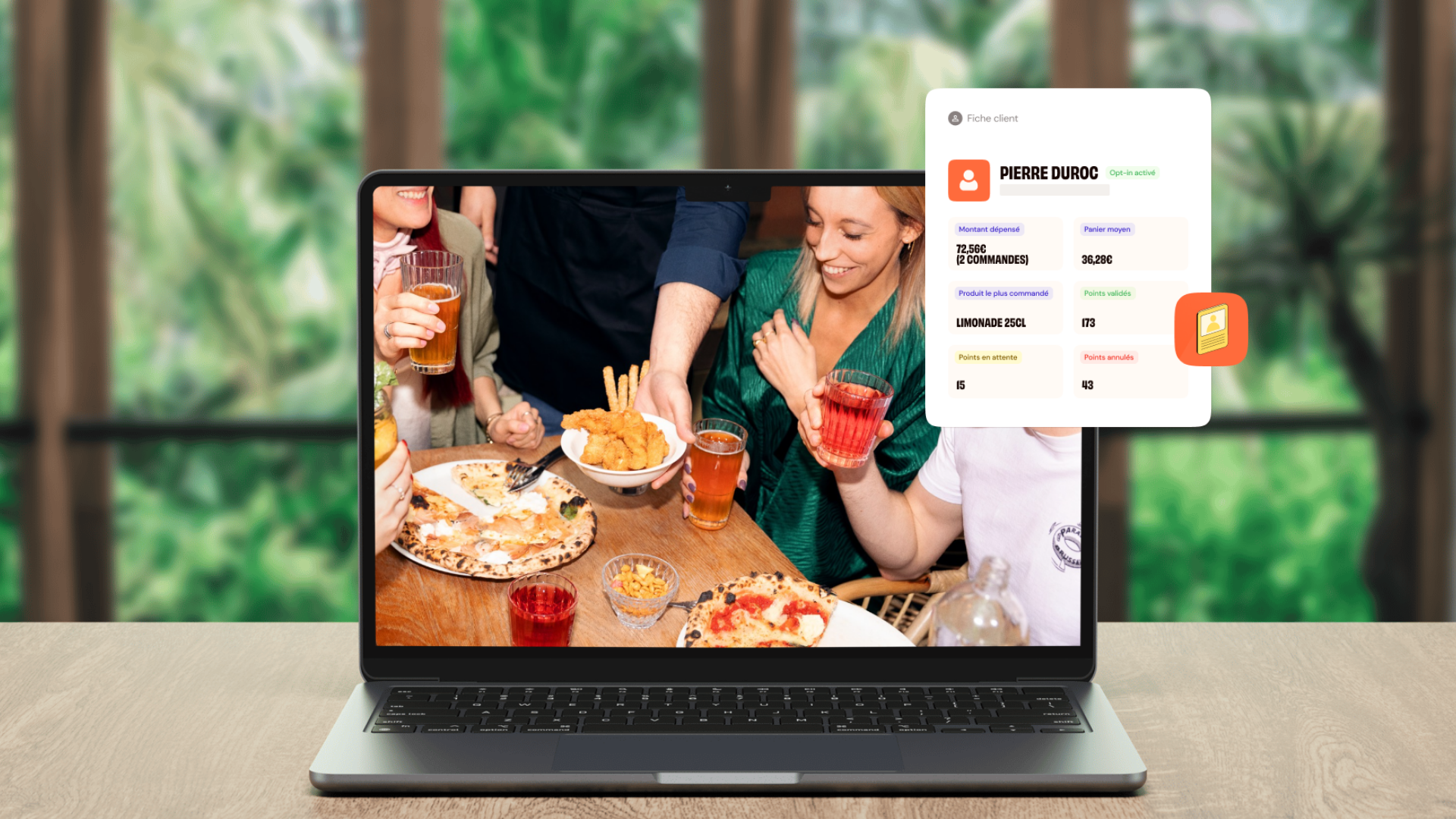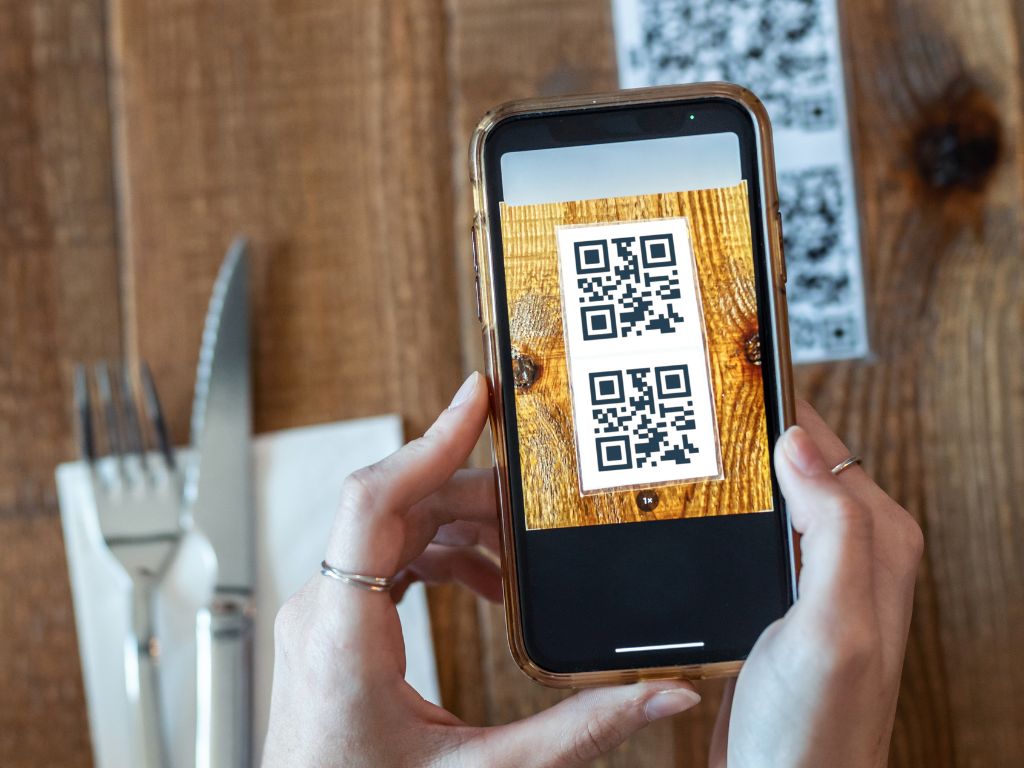Allergens, special diets, ethics: how to make the most of your commitments in the customer journey
29 April 2025
Gluten-free, vegan, lactose-free, allergen-free... These words have become familiar on restaurant menus, from fast food as well as more traditional. But even today, they often remain invisible, poorly explained or relegated to the background in the ordering process.
Yet the demand is there. And it continues to grow.
In France, 40 % of consumers follow a special diet. Of these, 55 % do so out of environmental or ethical conviction, and 42 % for medical reasons. In other words: these choices are not anecdotal. They directly influence your customers' decisions.
So it's not just a matter of "offering an option" to tick the box. It's all about displaying them properly, making them legible, understandable and easily accessible, whatever the channel: Self ordering kiosk, Click & Collect, QR Code or delivery.
In this guide, we take stock:
✔ why these commitments weigh more and more heavily in purchasing decisions,
✔ how to promote them effectively on your digital media,
✔ best practices (and pitfalls to avoid) to make it work, without false promises.
Expectations are becoming increasingly important when it comes to choosing a restaurant.
Taste, price, appetizing photos... these are no longer enough. Today, many customers also choose according to what's behind the plate: the ingredients, the origin, the way it's produced.
It's not just a question of offering a vegetarian or gluten-free option "just in case". For a growing number of customers, these criteria have become a real starting point in the choice of dish (and even in the choice of restaurant).
What drives new eating habits
There are many driving forces, often in combination:
➜ Health: allergies, intolerances, chronic illnesses, but also the desire to eat a more balanced diet or limit certain foods (meat, lactose, gluten...).
➜ Ethics: respect for animal welfare, rejection of certain industrial practices, search for labels or more transparent supply chains.
➜ The environment : reducing meat consumption, choosing local or seasonal products, paying attention to carbon impact.
According to Ifop, almost one French person in two has reduced their meat consumption. This trend is even more marked among young people: 40 % of 18-24 year-olds say they pay attention to the origin and composition of dishes when eating out (Observatoire Cetelem, 2023).
For some, these choices are a matter of conviction. For others, a necessity. In both cases, the clarity and accessibility of information play a decisive role in the customer experience and in the final decision.
Allergens, special diets, labels: transparency has become essential
When it comes to allergens, the legal obligation is clear. But in practice, too many establishments make do with inconspicuous or incomplete information.
A customer with a gluten or lactose allergy isn't going to guess whether the pizza dough is wheat-free, or whether the sauce contains milk. They expect accurate, accessible, reliable information.
"In France, the law requires restaurateurs to clearly inform consumers about the presence of 14 major allergens in their dishes (INCO Regulation n°1169/2011). These allergens are: gluten, crustaceans, eggs, fish, peanuts, soy, milk (including lactose), nuts, celery, mustard, sesame, sulfur dioxide and sulfites, lupin and mollusks. The information may be displayed on the card, available as a poster, register or written document readily available on request. If it is not directly visible, customers must be expressly informed of its availability."What the law says
Customers have the same expectations, preferring organic products, quality labels (Label Rouge, PDO, PGI), sustainable fishing and local produce. If you've made committed choices, it would be a shame not to make them visible. But it's not enough to write it once on your site's home page. Information needs to be where it's needed: directly on the map, the kiosk, the digital menu, the product sheet.
This level of clarity is reassuring. It avoids mistakes. It shows that you take your customers' needs seriously, without overselling or making empty promises.
Why displaying your commitments influences your customers' choice (and loyalty)
Between two establishments of equivalent quality and price, customers will often choose the one where they can order without stress. The one that, right from the start, shows him that his needs are understood and taken into account. Not the one where he has to rummage through the menu or ask at the counter if the sauce contains lactose or if the veggie burger is really vegetarian.
It's not just a question of comfort. It's a question of trust.
A blur or absence of information can be enough to disqualify a restaurant, even if the food is good. Making your commitments visible right from the order process removes any doubts before they arise. It means enabling every customer to make their choice quickly, without hesitation, and in complete safety.
And this is especially true for group orders:
➜ if everyone can easily identify an option that suits them,
➜ if the allergic or vegan person doesn't have to monopolize the discussion,
➜ if the info is fluid and reassuring for everyone,
... so the decision to order from you is quicker and easier.
What this means for your experience (and your business)
Fewer hesitations = more finalized orders
A reassured customer takes action. Conversely, an unclear or overly complex map slows down the decision process, especially on channels such as the Internet. Click & Collect or the terminalwhere the experience has to be fast.
A real difference in loyalty
If an allergic or vegan customer has found your products easy to use once, there's a good chance they'll come back again. Because they know they won't have to ask the same questions every time.
Enhancing word-of-mouth (and customer reviews)
Feedback concerns not only the plate, but also the overall experience: "Easy to spot allergen-free dishes", "Very clear on vegan options", "You can filter directly by diet, hyper practical".
Better error (and risk) management
The more precise and well-integrated the information, the fewer misunderstandings and unpleasant surprises there will be. It's also a protection for you: an error in allergen labelling, for example, can have serious consequences.
Want to find out more? Discover our resource ➜ The boom in made-to-measure foodservice: between health, pleasure and food identity
How can you make the most of your digital tools to promote these commitments?
Where paper has its limits, digital makes your commitments visible without overloading the customer experience.
On control terminals
➜ Create specific categories visible from the home screen: "Vegan", "Gluten-free", "Lactose-free", "Halal".
➜ Display legible pictograms on every dish visual, with easily identifiable color codes or symbols (but keep it simple: too much information kills information).
➜ Order the display intelligently: For example, highlight vegetarian or allergen-free options during certain periods (Veganuary, Gluten-Free Week, etc.). These kinds of settings are simple, but can have a real impact on choices.
Click & Collect, Click & Delivery and on QR Code menu
➜ Propose active filters as soon as the menu opens, not just on the product sheet. The idea is to enable everyone to see directly which options are right for them.
➜ Tailor info depth to context: on delivery, customers are often looking for speed, while at the table, they may have more time to consult the details.
➜ Standardize allergen information: same wording everywhere, no variations between substrates.

For food courts
➜ Activate the transverse stalls : they bring all compatible offers together on a single page, across all stands.
For example, a "Vegan Options" section that draws from the cards of each stand, without the customer having to go and check the signs one by one.
It makes life easier for customers, and gives visibility to stands that offer these options, even if the customer wouldn't have thought of them first.
Going further: boosting the average basket with aligned suggestions
Displaying your commitments doesn't just reassure. It can also become a lever for additional sales, provided you offer the right suggestions to the right people.
With the product pushes you can :
✔ offer a vegan drink to a customer who chooses a vegan dish
✔ suggest a lactose-free dessert with an allergen-free dish
✔ adapt formulas (starter + main course + dessert) according to the diets chosen, without the risk of inconsistency in the proposals
This logic helps to avoid upsells that are out of touch. (like suggested nuggets on a veggie order). Your proposals remain relevant, respectful of the customer's choices and effective in terms of the average basket.
Enhancing the value of your food commitments through digital channels is a concrete business lever. Not by multiplying marketing messages, but by making information visible, useful and well integrated into the ordering experience.
How can we measure the impact of these changes?
But how do you know if it's really working? Does this information really influence your customers' choices, and boost your sales or loyalty?
Some concrete indicators to follow.
1. Share of sales by specific plan
Your ordering tools often allow you to analyze sales by dish type. See if :
➜ vegetarian, vegan, allergen-free options are regularly chosen,
➜ certain periods (Veganuary, etc...) boost these choices.
Also interesting: measure whether these dishes generate a similar or higher average basket than others.
Want to find out more? Discover our resource ➜ Higher average ticket: the direct effect of self-order tools
2. Customer opinions and feedback
See if your commitments stand out spontaneously in the customer reviews.
You can also include a short question in your satisfaction surveys or post-order emails: "Did you easily find an option that matches your dietary needs?"
Want to find out more? Discover our resource ➜ Restaurants: 5 ways to collect customer reviews
3. Trends in loyalty and repeat orders
Clear, well-integrated information helps build loyalty.
Follow us :
➜ the repurchase rate,
➜ how often customers identified as vegan, vegetarian, allergen-free, etc., order,
➜ the evolution of your customer base on these segments.
If you have a loyalty program connected to your control tools, this data is often easily accessible.
Little extra tip: test, compare, adjust
You can also run A/B tests:
➜ for example, measure the impact of a specific highlight (filters visible from the home page vs. more discreet filters),
➜ or test different pictogram formulations and visuals.
These adjustments will allow you to optimize the experience and see what really works with your audience.

Best practices to follow (and pitfalls to avoid)
Customers' expectations have evolved: they don't just want to be told "it's healthy", they want to know why, how and what's inside.
And if the speech is blurred, exaggerated or poorly controlled, it can quickly backfire.
Here are three points to watch out for to avoid making the wrong move.
1. Be precise: ingredients, origins, labels, legal information
A dish marked "vegan" or "gluten-free" is a commitment. And your customers, especially those with dietary restrictions, won't let you pass them by.
What to do:
➜ List ingredients clearly: You don't need to write an essay, but you do need to specify what may be in question (e.g. "wheat-based soy sauce").
➜ Indicate allergens according to legislation: not in small print at the end, but clearly visible on each dish. Digital technology allows you to display this information directly on the product sheet, or even as a preview in the list.
➜ Mention origins and labels when relevant: a local or organic product can tip the balance. But here too, keep it factual (e.g. "free-range eggs - French origin", "Label Rouge chicken").
No vague or catch-all formulas. Your customers don't want to read "carefully selected quality products". They want to know what they're eating, period.
2. Don't fall into the trap of greenwashing: consistency between what you say and what you actually do.
Putting "100 % local" in big letters on your terminal if half your card comes from the other side of the world? Bad idea. Displaying "vegan dishes" when there's just a raw vegetable salad with no dressing? Same thing.
Your customers aren't fooled. They're quick to spot talk that's too good to be true. And in such cases, the risk is twofold:
➜ You lose the trust of the people directly involved.
➜ You're discrediting your entire communication.
A few best practices:
➜ Propose real alternatives: a complete vegan dish, not just a side dish.
➜ Don't pass off a simple meatless option as a vegetarian dish if the broth or sauce are not.
➜ If you display commitments (organic, local, homemade), make sure your teams know how to explain what's behind it.
There's no need to overdo it. It's better to be sober, precise (and honest).
3. Think about regularly updating your materials and training your teams.
False or out-of-date information can do more damage than no information at all.
A recipe that has changed but whose product sheet has not been corrected. A new vegan range that nobody is talking about because the information hasn't been passed on to the teams. This kind of discrepancy happens quickly (and undermines confidence).
To avoid this:
➜ Update your digital tools as soon as there's a change in the map. The advantage of digital is that you don't have to reprint menus, but you do have to update them.
➜ Train your teams : They need to know what options are available, how to answer questions and, above all, how to give the right information.
➜ Think of the little details too: Product visuals, descriptions and pushes must keep pace with changes in your offer. A push that proposes a classic milk dessert on a vegan dish, because the settings haven't kept up, breaks the experience.
Consistency between what you advertise, what you offer and what your teams say is what makes your commitments credible.
What we display is binding. And at a time when customers are more attentive than ever to what they consume, lack of clarity or marketing shortcuts are no longer acceptable.
Being precise, consistent and up-to-date doesn't mean "doing it right", it means doing it just right.
Ready to put your commitments to better use? Let's talk
At Obypay, we develop digital solutions that enable you to clearly show what you offer, and promote it to committed customers.
Filters, tags, aligned suggestions, cross-sectional stalls : tools designed to reassure your customers, simplify their experience and sell more effectively.
Need advice on how to adapt these features to your business? Our team is here to talk to you.













